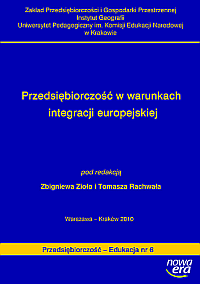Enterprise and Education as Strategies for the Professionals during the Economic Crisis
DOI:
https://doi.org/10.24917/20833296.6.38Keywords:
przedsiębiorczość, edukacja, kryzysAbstract
The present slump in the Polish economy is cause of serious problems for blue collar workers and quite big challenges for many professionals (e.g. management, well-qualified personnel of advertising agencies). Mass media, politicians and public opinion are focused on the situation of that first group, in contradiction to the well-qualified staff.In the case of advertising sector or a similar service, one of the most popular reaction to a job loss is an own enterprise. Their competitive advantage is an implication of lower costs and greater flexibility. This phenomenon, associated with the economic crisis, has a marked influence on the entire branch. It accelerates specialization of core businesses, development of outsourcing services and implementation of global trends.In the same time, the management is more interested in an advanced education. One of the most visible indicators of that phenomenon is an increasing number of candidates for the executive MBA studies.The crisis strategies of the protection of professional positions by well-qualified staff are proving their huge adaptive capacity. Moreover those choices concerning their own career development create changes in particular sectors and even increase competitiveness of the entire national economyReferences
Mordasiewicz J., 2009, To nie chwilowe załamanie, to powrót do normalności, Think Tank, 1_2009, Warszawa.
Parklin M. (red.), 2008, Economics, PearsonPLC, Harlow.
Johnson G. (red.), 2009, Exploring corporate strategy, PearsonPLC, Harlow.
Sull D.N., 2006, Firma przetrwania, HELION, Gliwice.
Downloads
Published
2010-01-01
How to Cite
Dąbrowski, K. (2010). Enterprise and Education as Strategies for the Professionals during the Economic Crisis. Entrepreneurship – Education, 6, 493–498. https://doi.org/10.24917/20833296.6.38
Issue
Section
Articles
License
Articles are published under the terms of the Creative Commons License (CC BY-ND 4.0; Attribution– NoDerivs).

